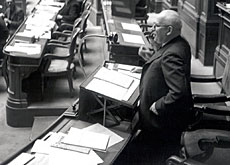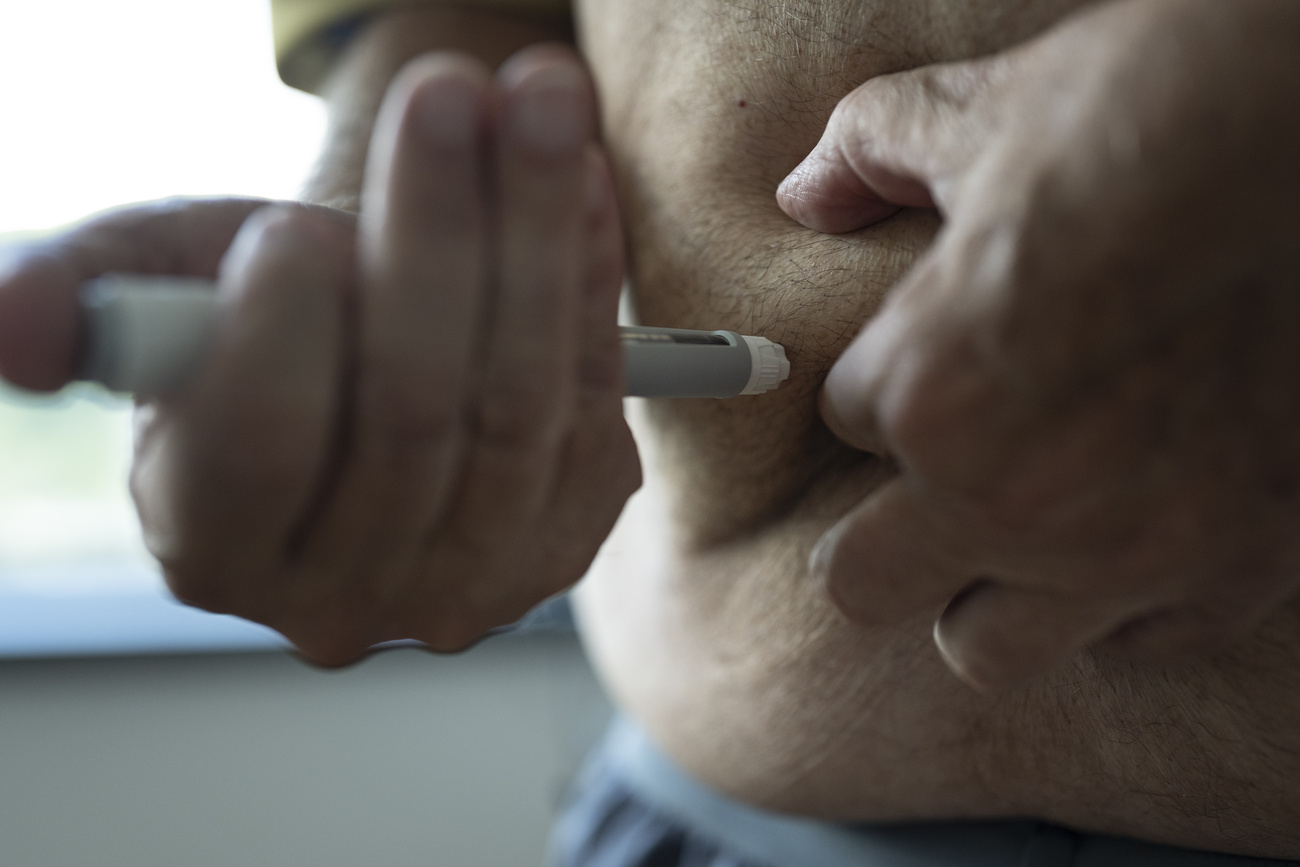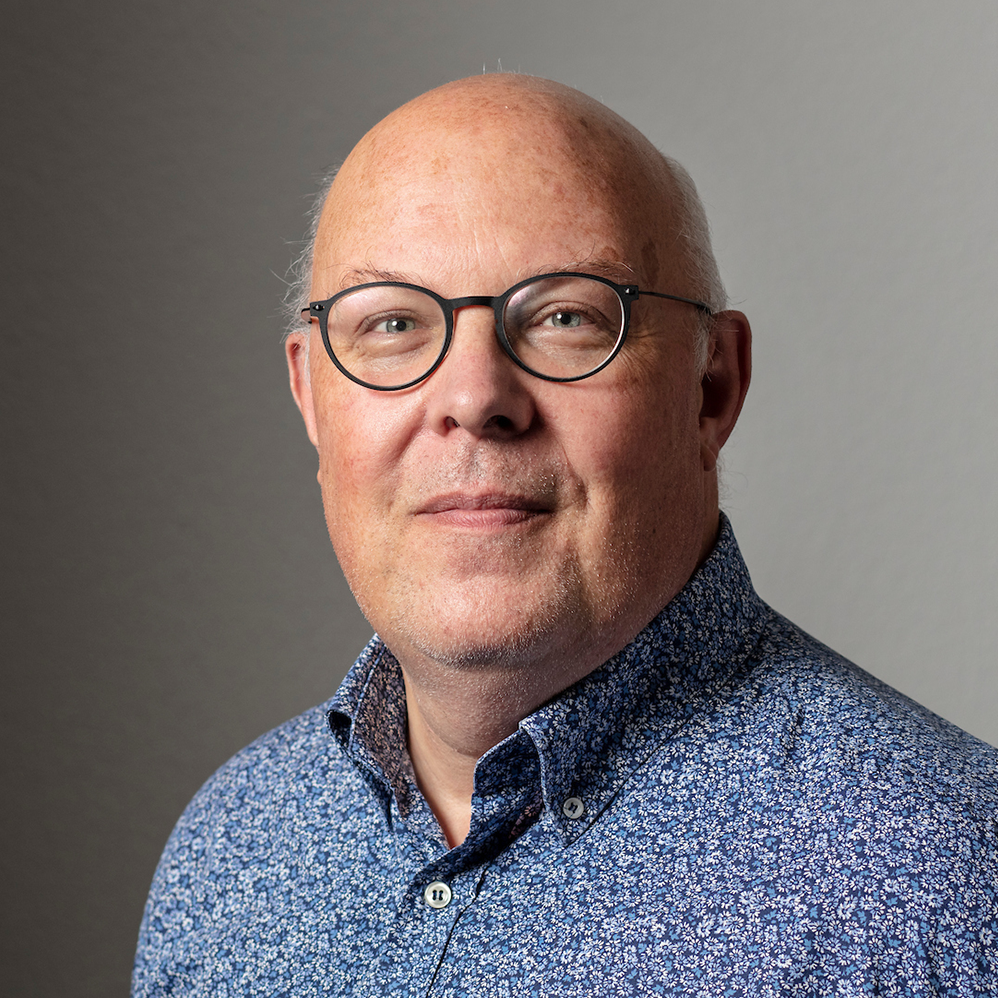
Voters leave government to the politicians

Switzerland's system of direct democracy gives voters the final say on almost every issue. The only thing they don't do is elect the government.
That is power reserved for parliament, which elects the cabinet under a power-sharing system that has been in place since 1959.
That power-sharing arrangement – known as the “Magic Formula” – shares out cabinet seats based partly on the parties’ share of the vote, and partly on the need to have Switzerland’s three language regions properly represented.
But the changing electoral fortunes of the four parties mean that today the arithmetic is somewhat out of kilter, at least in terms of the vote.
The rightwing Swiss People’s Party, for instance, has only one seat in the seven-member cabinet, while the centre-right Christian Democrats – a much weaker force electorally – hold two seats.
The centre-right Radicals and the centre-left Social Democrats each have two as well.
Power-sharing in the government has endured since 1891, when the Radicals invited a member of the Catholic-Conservative Party – the forerunner of today’s Christian Democrats – into the cabinet.
Before that, Radicals had monopolised all seven seats since the birth of modern Switzerland in 1848. Indeed, that party developed and largely imposed the federal structure on Switzerland.
Political earthquake
The political landscape changed profoundly in 1919, when the people accepted the principle of proportional representation in parliament.
The dominant Radicals saw their elected representatives drop from 105 to 63, while the Socialists (predecessors of today’s Social Democrats) increased their share of parliamentary seats from 19 to 41.
The ever-expedient Radicals, facing stronger opposition, yielded another cabinet seat to the Catholics – an arrangement which lasted until 1929.
By then, the Party of Farmers, Tradesmen and Citizens (today’s Swiss People’s Party) managed to secure a cabinet seat during a double election.
The precursor of today’s Magic Formula was born.
But this power-sharing arrangement – four Radicals, two Catholic-Conservatives, and one Farmer – did not survive the Second World War.
Social Democratic presence
With Hitler’s war machine overrunning Europe, the Socialists took on the mantle of defender of the nation, and soon became the most important party in the House of Representatives.
Their electoral success meant they could no longer be denied a role in government, and in 1943 the Radicals handed a cabinet seat to the Socialists.
That arrangement prevailed for ten years, until 1953, when the Radicals briefly recovered the Socialists’ seat after the left’s candidate resigned from the government.
The following year, the Catholics, with the support of the Socialists, grabbed a seat back from the Radicals, leaving the seven cabinet portfolios divided among three Radicals, three Catholics, and one Farmer.
In the 1959 cabinet election, the Catholics and the Socialists again worked together to boost the left’s presence in government. The outcome saw the Radicals lose a further seat to the Socialists, who also gained one from the Catholics.
The outcome was an equitable power-sharing government with three parties – the Radicals, Socialists and Catholics – having two seats each, and the Farmers holding one.
Balance of power
The balance of power remained more or less the same until the beginning of the 1990s, when the Christian Democrats began to lose support and the People’s Party started gaining strength.
Since the last federal election in 1999, the People’s Party has become the largest in terms of the popular vote with 22.5 per cent.
That puts it marginally ahead of the Social Democrats (with 22.48 per cent) and the Radicals with 19.93 per cent. The Christian Democrats have seen their support dwindle to 15.78 per cent.
If it holds or improves on those gains in the October 19 elections, the People’s Party is certain to increase its demands for a second cabinet seat at the expense of the Christian Democrats.
However, the People’s Party’s electoral strength is based only on the percentage of the voters; when translated into parliamentary seats, this advantage is reduced to almost nothing.
Moreover, cabinet ministers are chosen by parliament, and the three centre parties could work together to prevent the People’s Party from gaining a second seat.
swissinfo, Olivier Pauchard
The Christian Democrats’ first cabinet minister was Joseph Zemp from Lucerne (1891).
The Swiss People’s Party’s first cabinet minister was Rudolf Minger from Bern (1929).
The Social Democrats’ first cabinet minister was Ernst Nobs from Zurich (1943).
The “Magic Formula” was born as a compromise among the parties. It is a gentlemen’s agreement, and is not based on any written law or legal principle. Implicit in the arrangement is that three of the seven cabinet seats should be reserved for French- and Italian-speakers.

In compliance with the JTI standards
More: SWI swissinfo.ch certified by the Journalism Trust Initiative





























You can find an overview of ongoing debates with our journalists here . Please join us!
If you want to start a conversation about a topic raised in this article or want to report factual errors, email us at english@swissinfo.ch.